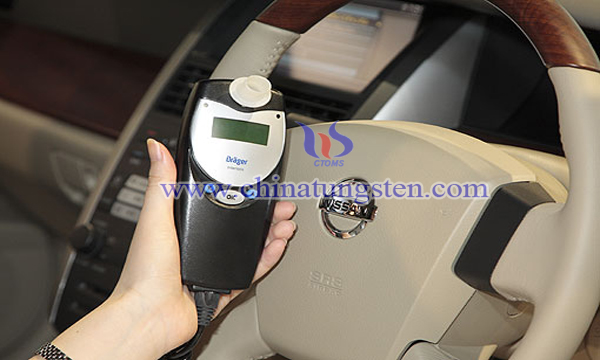Platinum-plated Zinc Tungstate Gas Sensitive Material
- Details
- Category: Tungsten Information
- Published on Thursday, 06 September 2018 22:23
Metal tungstates are a kind of important inorganic materials. They have good application prospects in optical fibers, scintillation materials, photoluminescent materials, humidity sensors, magnetic devices, microwave applications, catalysts and corrosion inhibitors. Among them, zinc tungstate nanomaterials are good materials for photoluminescence, photocatalysis and gas sensing. However, pure zinc tungstate nanomaterials are less sensitive to hydrogen.

In view of the shortcomings of the existing technology, researchers have found a platinum-loaded zinc tungstate nanomaterial and its application in the field of gas sensing. The platinum loaded tungstate nanomaterials can have a positive effect on the sensitivity of zinc tungstate in hydrogen. It is prepared according to the following steps:
Step 1. Add 1 mmol of Na2WO4·2H2O, 5.44 mmol of CH3COONa·3H2O and 0.46 g of PVP to a solution of 15 ml, and stir until uniformly dispersed (form a homogeneous and transparent solution), wherein the solution is a deionized aqueous solution of ethylene glycol, the volume ratio of alcohol to deionized water is 14:1.
Step 2. Add 15 ml of 0.067 mol/L Zn (CH3COO)2 aqueous solution to the solution obtained by step 1 and stir it to disperse evenly, which is dripped in 35 minutes.
Step 3. Transfer the solution obtained in step 2 to a 60 mL PTFE autoclave. The reaction temperature rises to 180 degrees Celsius from room temperature (20-25 degrees Celsius) at a rate of 8 degrees Celsius per minute. The reaction lasts 12 hours at 180 degrees Celsius. After the reaction is completed, the mixture is naturally cooled to room temperature and the mixture is centrifugally separated into white precipitates. Zinc tungstate was obtained by washing with deionized water and anhydrous ethanol eight times each, putting the white precipitate into the drying box and drying at 60 ℃ for 12 h.
Step 4. At room temperature, the zinc tungstate obtained from step 3 is evenly dispersed in 50 ml of absolute ethanol (obtained suspension) by stirring, and nitrogen is introduced to remove oxygen. Under the protection of nitrogen, an aqueous solution of H2PtCl6 with a concentration of 2 mol/L is dripped into the absolute ethanol. The ultraviolet light with a power of 200 W and a peak of 360 nm is used for 12 hours. The metal platinum is reduced and in situ compounded with zinc tungstate by a reaction at a distance of 7 cm. After the reaction was completed, the mixture was centrifuged, white precipitated, washed seven times with deionized water and anhydrous ethanol, and dried at 70 ℃ for 18 h in a drying chamber, resulting in the platinum-loaded zinc tungstate nanomaterials.
Compared with the existing technology, the platinum-loaded zinc tungstate nano-materials are more uniform in dispersion, smaller in size, more sensitive and more adaptable to the environment. For the detection of ethanol gas, the concentration of ethanol gas is as low as 100 ppm. When the concentration of ethanol gas is 100-4000 ppm, the sensitivity range of zinc platinum tungstate nanorods is 1.355-4.23 and zinc platinum tungstate nanoparticles is 1.64-4.77.
- Tungsten Oxide Manufacturer & Supplier, Chinatungsten Online: www.tungsten-oxide.com
- Tungsten News & Prices of China Tungsten Industry Association: www.ctia.com.cn
- Molybdenum News & Price: news.molybdenum.com.cn
- Tel.: 86 592 5129696; Fax: 86 592 5129797; Email: sales@chinatungsten.com



 sales@chinatungsten.com
sales@chinatungsten.com